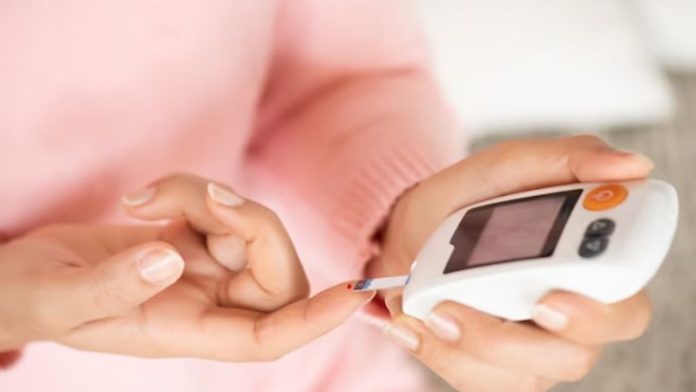
It might seem from the title ‘Diabetes in Women’ that this article is exclusively for women. However, this is not the case; men can have equal benefits too.
What is Diabetes?
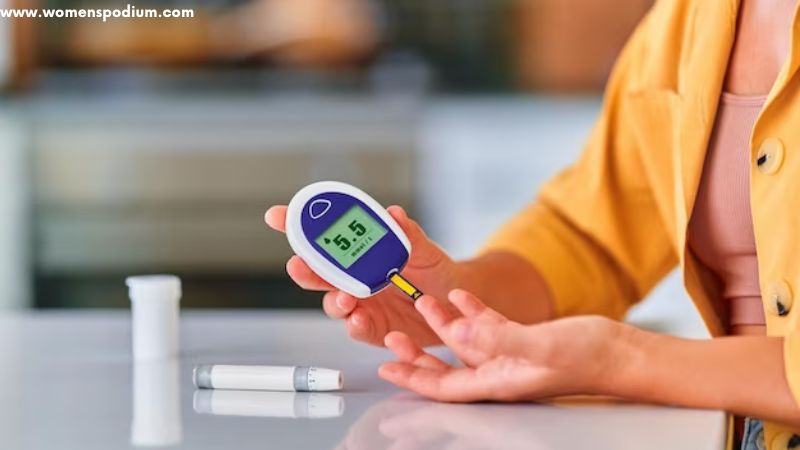
It is a long-standing metabolic disorder that interferes with glucose consumption in the body. It leads to persistently raised glucose levels in the blood. We already know that our body derives energy from the breakdown of nutrients present in the food. One of the major components of food is carbohydrates; they are naturally occurring sugars, starches, and fiber in food. When our body breaks carbohydrates, it releases sugars.
Insulin is a hormone produced by pancreatic beta cells. It acts as a gate in the cells through which glucose enters the cells from the bloodstream for energy production. When you have diabetes, the insulin either isn’t sufficient, or the cells are unable to use it. This leads to high glucose levels in the blood, leading to many complications.
Diabetes Symptoms in Women

Overall, women are less likely to suffer from diabetes. The reasons for this are not clearly understood yet. Diabetes signs and symptoms in women are the same as those in men. The treatment and overall course of illness are also the same. One should turn to a doctor to find out the type of diabetes they have and the necessary treatment they need to get.
Complications of Diabetes in Women

Diabetes affects both males and females in the same way, except for the following
- Diabetes in pregnancy can cause jaundice and hypoglycemia in newborns.
- Women who have diabetes during pregnancy have a greater risk of cesarean section birth because of the larger size of the baby.
- Disturbed blood supply causes hardening of vaginal blood vessels and causes dryness. Due to this, there is decreased vaginal lubrication which makes sexual intercourse painful.
- Recurrent vaginal infection.
What are the Types of Diabetes?
There are three main types of diabetes.
- Type-1 diabetes
- Type-2 diabetes
- Gestational diabetes or diabetes during pregnancy.
1. Type-1 diabetes
It occurs when the body’s immune cells attack insulin, forming cells of the pancreas (beta cells). As a result, the cells are destroyed, and there is less than normal insulin production.
What is the Age of Onset of Type-1 Diabetes?

Type-1 diabetes occurs at a very early age, mostly in the first two decades of life. It used to be called juvenile diabetes. Hence, it is thought to be genetic in origin.
What are the signs and symptoms of type-1 diabetes?
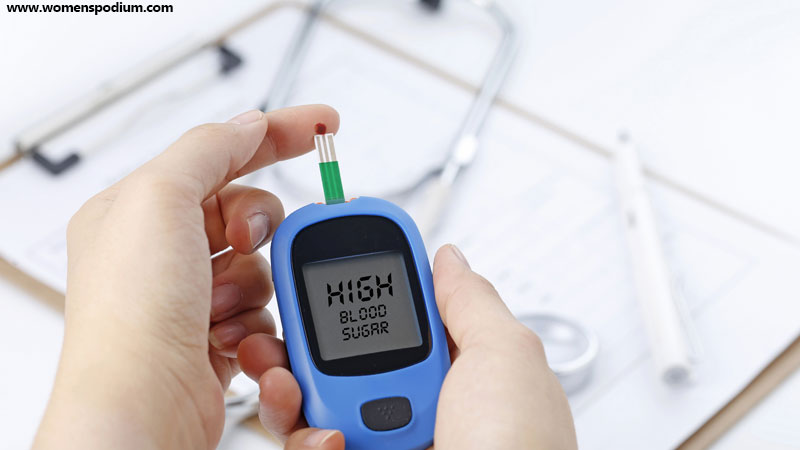
Hyperglycemia is a condition in which blood glucose levels are elevated. When the glucose is unable to enter the cells, the cells become hungry for glucose. The blood tries to get rid of excess glucose by increasing urine output. This leads to the following conditions:-
- Increased thirst, due to water loss via urine, the body tries to compensate for it by increasing thirst.
- Increased appetite.
- Frequent urination to get rid of superfluous glucose
- Weight loss due to unavailability of nutrients
- Slow and poor healing of wounds.
- Irritability.
- Weakness due to mineral and salt loss.
- Bedwetting in children
- Dehydration due to excessive urination.
How to diagnose diabetes type 1?

Once you visit your physician with the symptoms mentioned above, he will conduct some biochemical investigations for the detection of the disease:-
- Fasting blood glucose levels.
- HbA1c, it is the amount of glucose bound with red blood cells. It gives an average estimation of blood glucose concentration in the past 12 weeks.
- Urine complete examination for the detection of glucose in urine.
- Serum electrolytes (levels of minerals).
He may order some other tests for your general health profile like:
- Renal (kidney) function tests to monitor the well-being of kidneys
- Fasting lipid profile to assess the amount of good and bad cholesterol in the blood.
What is the treatment for type 1 diabetes?

The treatment is broadly classified into two classes:-
- Lifestyle modification
- Maintain an ideal weight
- Exercise regularly
- Eat a healthy diet and keep a count on your calorie intake.
- Medication
As there is less or no insulin available in the blood, the mainstay of treatment is to administer insulin through injections. The injected insulin works as a substitute for natural insulin. Insulin is given subcutaneously (under the skin). There are the following types of insulin:
- Rapid-acting insulin
- Intermediate-acting insulin
- Long-acting insulin
Your physician can give you a single type of insulin or a mixture.
Apart from insulin, you may need mineral and vitamin supplements for the optimum functioning of the body.
In what forms is the insulin injection available?

The solution comes either in a glass vial injected via syringe or it comes in the form of an insulin pen.
Where to give an insulin shot?
It is administered under the skin. The good news is that you do not need to go to the hospital for this shot as it is self-administered. There are different sites on the body where one can get the injection.
- On the abdomen, around 5 cm away from the belly button.
- The upper and outer areas of the arms
- The upper and outer areas of the thighs
- Buttocks
How to have an insulin shot?
Your healthcare provider will guide you regarding the insulin shot. It is overly simple, and you will learn it real quick. Here are the steps:
- Wash your hands with soap and water
- Put the needle on the pen
- Remove the cap of the needle
- Dial 2 units and push the plunger to give an air shot to remove any bubbles
- Now dial your dose
- Choose the soft fatty area
- Pinch the overlying skin
- Push the needle at the base of the pinched skin and keep it steady
- Push the plunger and hold the pen still for 5 seconds
- Pull the needle back
How will I know that the given injection is right?
This is very simple to detect. A wheel will form at the site of injection, which means that it is duly injected.
What are the Complications of Diabetes Type 1?

This disease is not curable, but one can control it. However, if it goes uncontrolled, it can pose serious threats to your health. It is a cardiovascular disorder and affects each and every organ from head to toe. Here we will discuss the most common complications with respect to vital body systems.
- Central nervous system
Although the brain mainly derives its energy from glucose, but too much of it damages to the brain cells. The type1 diabetics may suffer from agitation and confusion. In severe cases, they can have coma.
- Cardiovascular system
Too much of glucose damages blood vessels and hinders blood supply. Therefore, there is an increased risk of stroke and heart attack in patients with untreated diabetes.
- Gastrointestinal system
The digestion becomes slow, and the patient suffers from constipation. This is due to the fact that the nerves are damaged, and so are the blood vessels.
- Urinary system
Uncontrolled and untreated diabetes results in kidney damage.
- Reproductive system
In males, it causes erectile dysfunction, whereas in females, untreated diabetes can lead to decreased sex drive.
- Musculoskeletal system
It weakens the muscles and makes the patient feel lethargic all the time.
- Diabetic retinopathy
Due to damaged blood vessels in the retina, the vision can decrease slowly.
- Diabetic foot
Undiagnosed and untreated diabetes leads to worsening of blood supply and depriving the tissues of the nutrients and oxygen. It leads to petrification of tissues resulting in wound formation.
2. Diabetes Type-2
It is also a chronic disease. It was formerly known as adult-onset diabetes, but now this is not the case. In this type of diabetes, your body is unable to utilize the insulin properly, resulting in elevated blood glucose levels. In comparison with type-1 where insulin is low or not formed at all, this type hinders the insulin utilization by cells.
Is Diabetes type-2 an Inherited Ailment?

There is no clear evidence to suggest that this is linked to genes. However, developing type2 diabetes becomes more likely if you have first-degree relative suffering from it.
At What Age can I Fall Prey to Diabetes Type-2?

The average age of onset is 45 years, but many develop even before this age.
What are the Risk Factors for Type2 Diabetes?

This is a disease that results from an inappropriate lifestyle. For example:-
- Consuming too much junk food.
- Taking a lot of fizzy drinks.
- Being overweight.
- Too much lying or sitting and no exercise.
- Taking a lot of stress.
How do you Feel When your Blood Sugar is too High?

The resistance to insulin consumption leads to elevation of blood glucose levels. Increased glucose needs to be expelled out of the body. The body gets rid of surplus glucose by excreting it through urine. This leads to:-
- Polydipsia; increased thirst
- Polyphagia; more hunger
- Polyuria; repeated urination
- Dehydration
- Fatigue
- Unintended weight loss
In extreme cases:
- Confusion and confabulation
- Unconsciousness; undiagnosed diabetes could sometimes first come to light after having an episode of unconsciousness.
What are the Diagnostic Tests for Type2 Diabetes?
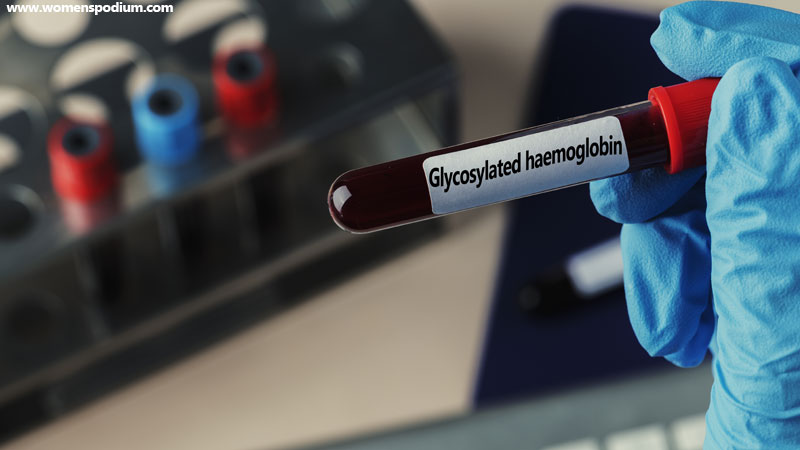
You are supposed to go through some tests in order to reach the final diagnosis.
- Fasting blood sugar levels.
- Glycosylated haemoglobin (HbA1c). This measures the concentration of sugar in the erythrocytes (red cells)
- Urine glucose levels.
If once you get the confirmation that you have diabetes, this is the time to conduct some more tests to have a detailed look at your health.
- Lipid profile test
- Kidney function tests
- ECG
What are the Treatment Options for me if I am Diagnosed with Type2 Diabetes?

As I have mentioned earlier, this is a disease of lifestyle. So, the first-line treatment is lifestyle modification which includes
- Maintain an ideal BMI (Basal metabolic index)
- Exercise daily for at least 30 minutes
- Stop the junk food and start eating healthy.
- Stop fizzy drinks intake
- Avoid stressors.
If lifestyle modification alone does not help, then the next step is to start oral hypoglycemic (glucose-lowering drugs). Your physician may choose one or more than one tablets, depending on the severity of the case. He can also switch from one class of drug to another.
- Metformin
- Sulfonylureas
- Meglitinides
- Thiazolidinediones
- GLP-1 receptor agonists
- DPP-4 inhibitors
If your diabetes is resistant to oral hypoglycemic drugs, then the next option is insulin administration. Depending upon their action duration insulin is of following types:-
- Short-acting insulin
- Intermediate-acting insulin
- Long-acting insulin
Depending upon the therapeutic goals, your doctor will adjust the dose as well as the type of insulin.
Do I need Professional Help for Injecting Insulin?

The answer is no, your physician will demonstrate it once, and you will learn how to inject yourself. After some days, you will be able to inject with ease.
How to Inject Insulin?
Insulin is either available in the form of a vial or a pen. With vial, you will need a disposable insulin syringe. An insulin pen is refillable, or in some cases, it is also disposable. For injecting insulin, you must choose an appropriate site, and that could be one of the following:
- On the belly
- Outer and upper thighs
- Outer and upper arms
- Buttocks
Wherever you opt to inject, it is given in the soft fat tissue beneath the skin. There are simple steps to inject insulin.
- Sanitize your hands.
- Take the cap off the syringe.
- Fill 2 or 3 units more than your required dose.
- Push the plunger and discard the extra units to make the syringe air free.
- Pinch the skin where you want to inject.
- Quickly push the needle into the skin and press the plunger steadily.
- Keep the needle in place for around 5 seconds to let the insulin get in properly.
- Take the needle out and discard it.
- The usage of pen differs from the syringe in the way that you do not always have to fill it.
How Long will it Take to Cure Type2 Diabetes?
There is no cure for this disease. All you need is to take proper treatment along with lifestyle modifications. Like type1, you have to control it only.
What are the Possible Complications of Untreated Diabetes?
If you are compliant enough to the treatment, then the complications are less likely to occur. However, non-compliance can lead to various complications like:-
- Blindness: elevated glucose levels cause damage to blood-retinal blood vessels and impaired vision. It can ultimately lead to blindness
- Cardiovascular accident CVA: the damage to blood vessels can lead to brain haemorrhage or the formation of a clot in the blood vessels of the brain leading to the impaired blood supply. Both of the conditions lead to brain tissue damage and eventually paralysis.
- Increased risk of heart attack
- End-stage renal disease ESRD: the excretory function of the kidney becomes diminished due to hyperglycemia, and this can lead to the accumulation of toxic chemicals in the blood.
- Loss of peripheral sensations: the nerve damage causes reduced sensations and tingling in the feet or hands.
- Diabetic gastropathy: untreated diabetes leads to slowing down of digestion.
- Limb amputation: in extreme cases of untreated diabetes and neglected diabetes, ulcers may form on feet. Since there is poor healing of wounds in diabetics, the ulcer gets deeper and deeper, involving muscles and bones. Then there is no solution except for cutting off the affected area.
- Infertility: in males, diabetes may cause the sperm to get less potent. Moreover, it causes erectile dysfunction. In women, it causes irregularity of periods and premature ovarian failure. Hence, it contributes to infertility.
- Diabetic coma: it is a very severe complication of undiagnosed diabetes as well as untreated diabetes. It may be due to extremely high or extremely low sugar levels.
3. Gestational Diabetes Mellitus (GDM)
It refers to the high blood sugar levels in pregnant women who are previously non-diabetic. It can affect the pregnant woman’s health as well as the baby’s health.
What is the Cause of Gestational Diabetes Mellitus?
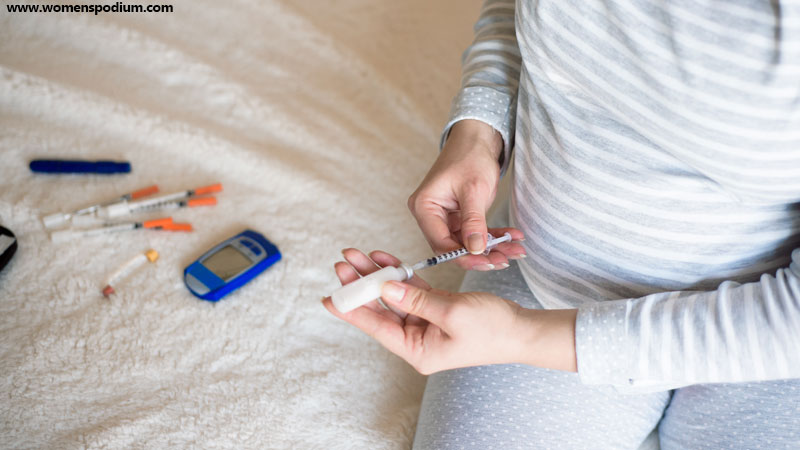
When you eat, your body produces glucose. The pancreas produces insulin, and this glucose is consumed by the cells. During pregnancy, the placenta makes hormones that increase glucose levels in the blood. If insulin is not working properly or not producing in sufficient quantities, the glucose levels rise above the normal range. This results in diabetes.
Am I at the Risk of Gestational Diabetes Mellitus?

Like the other two types, this type of diabetes has some risk factors too.
- Being overweight before pregnancy
- Age more than 25 years
- Having previously raised levels of glucose but non-diabetic (pre-diabetic)
- Previous history of gestational diabetes mellitus
- Family history of diabetes mellitus
- Given birth to a large baby previously (more than 9 pounds)
- Have delivered a dead baby
- Having another medical condition like polycystic ovarian disease, hypertension and heart disease.
How is the Diagnosis of Gestational Diabetes Established?
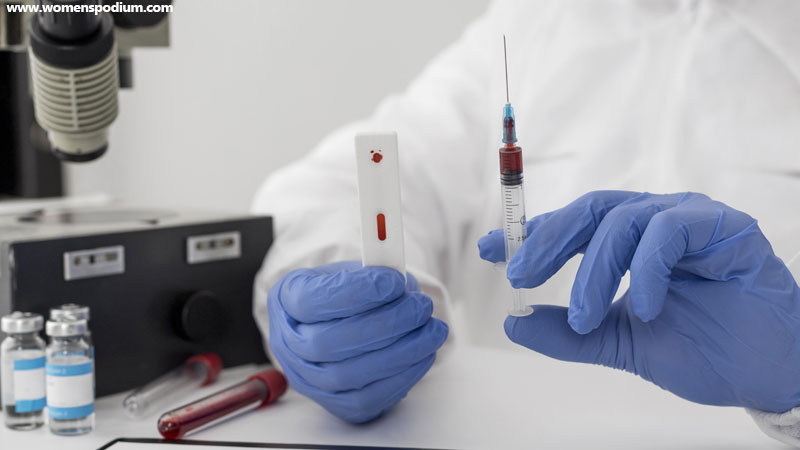
Like the other forms of diabetes it also is diagnosed through the following tests:
- HbA1c levels
- Fasting blood glucose
- Urine for ketone bodies
Treatment for Gestational Diabetes

Treatment begins with lifestyle modification. Eat a balanced diet, reduce junk food intake and exercise daily. Keep track of your blood glucose levels. If still uncontrolled, your doctor will start you on metformin. The last treatment option is insulin administration.
What would be the possible effect of GDM on my baby?
Your baby most likely will be healthy.
- He might develop hypoglycemia after birth so, your doctor will check his sugar levels.
- The baby could be of a bigger size.
- He could have jaundice.
Also Read: Exercises, yoga, meditation all these are proven techniques to heal our body and soul. Yoga for diabetes patients is doing wonders in controlling the sugar level.





